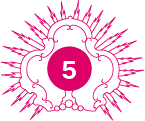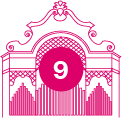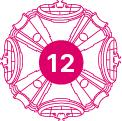Via Dora Grossa – now known as Via Garibaldi – has played a key role in the development of Turin’s layout ever since ancient times, as it was the decumanus maximus, i.e. the main east to west axis, through the city built by the Romans.
Its importance was such that, from the Middle Ages onwards, the authorities of church and state, as well as many businesses, put down roots in its immediate vicinity.
In the years of the Council of Trent (1542-1563), groups of lay people opened up new-found avenues of spirituality and devotion, which found expression in the everyday life of the city, especially along the vibrant Via Dora Grossa, the main thoroughfare for civic, university and business life.
It was here, for example, that the Venerabile Compagnia della Fede Cattolica (later known as Compagnia di San Paolo), the Confraternita della Santissima Trinità and the Confraternita di San Giovanni Battista Decollato (Misericordia) established themselves, and were later joined by other apostolates and charitable organizations, such as the Congregazione dei Banchieri, Negozianti e Mercanti.

























